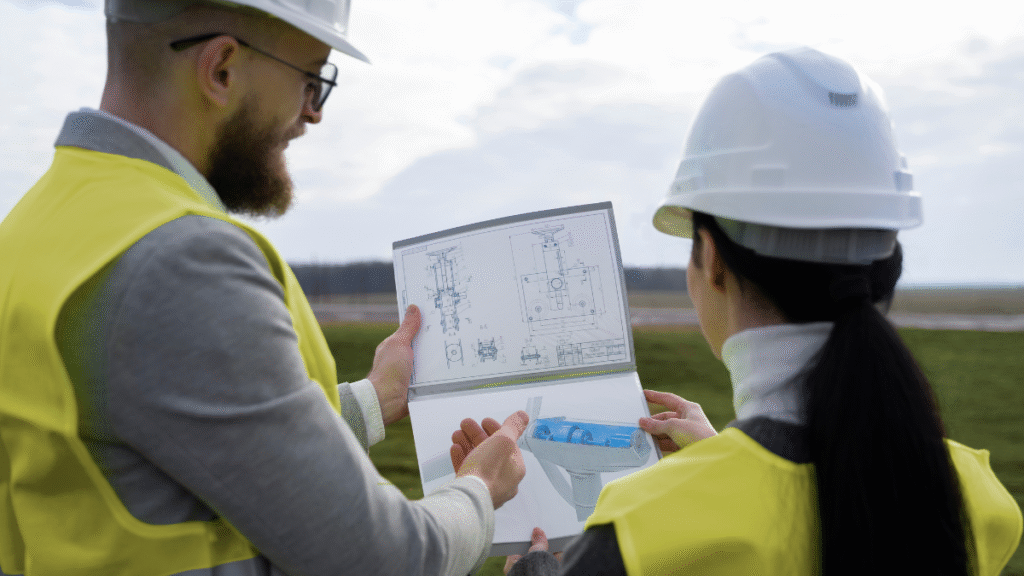Shaping Infrastructure Through Civil Engineering
The mark of civil engineering can be seen throughout every city and town, from the smooth highways connecting communities to the robust bridges and tunnels allowing easy navigation of otherwise impassable landscapes. At the core of these feats is a blend of creativity and rigor that transforms blueprints into the tangible backbone of everyday life. The journey of constructing safe, functional spaces often starts with a precision-focused process like the residential land survey, which gives engineers the critical groundwork data they need for an informed approach. Whether the goal is to pave the way for a new neighborhood or modernize older public spaces, this initial survey is a vital first step that sets up any development for long-term success and compliance. As populations swell and urban environments sprawl outward, the need for sophisticated civil engineering solutions intensifies. It’s not just about meeting current needs but adapting to future growth, climate change, and shifting how people live and move. Civil engineers serve as the bridge between visionaries—city planners, architects, and public stakeholders—and practical, structured implementation. Industry insights from the American Society of Civil Engineers reveal a sharp upswing in demand for innovative, sustainable, and durable infrastructure. The field continues to adapt, blending age-old knowledge with cutting-edge technology to create solutions that stand up to today’s pressures and tomorrow’s uncertainties.
Core Responsibilities in Civil Engineering
Civil engineering encompasses a broad scope of vital duties underpinning every phase of a project’s life cycle. Beyond drafting plans and determining materials, civil engineers must also analyze land and assess environmental concerns before any ground is broken. Precise surveying remains critical, as does a detailed environmental scan to identify potential soil, water, or habitat disruption risks.
- Detailed site analysis and measurement to evaluate terrain, natural obstacles, and regulatory requirements
- Structural design aiming for optimal durability, minimal maintenance, and efficient use of materials
- Coordinating collaboration between diverse stakeholders, from architects and government agencies to contractors and the general public
- Close monitoring of construction schedules and budgets to ensure efficient resource allocation and minimize delays
- Upholding strict standards related to safety, accessibility, and local, state, and federal regulatory compliance
The level of coordination and expertise needed across various project stages is significant. Civil engineers deliver functional, sustainable, and cost-effective results by combining technical mastery with strong project management. When properly executed, the ripple effects of these responsibilities touch everyone, from city dwellers navigating urban roads to families enjoying safer neighborhoods.
Pushing for Sustainable Designs
Sustainability is rapidly becoming a central focus in the development and modernization of infrastructure. Civil engineers today are expected to deliver innovative solutions that address immediate functional demands while safeguarding the environment for future generations. This includes using recycled and low-impact materials, energy-efficient buildings, transportation systems design, and strategies to mitigate issues like stormwater runoff and urban heat islands. The value of green infrastructure is increasingly evident. Collaborations between engineers and environmental experts lead to more resilient and adaptable urban systems. Cities that invest in urban forests, bioswales, and permeable pavement are seeing measurable improvements in flood control and public health while creating more comfortable and livable neighborhoods. Once viewed as cutting-edge, these methods are becoming industry standards due to their cost-effectiveness and long-term sustainability benefits. Civil engineers also take the lead in certifying green buildings and incorporating renewable energy systems—such as solar and geothermal—into their designs. These sustainable strategies meet evolving regulatory demands and help build communities better equipped to withstand the challenges of a changing climate.
Urban Development and Community Benefits
The impact of civil engineering on urban development is hard to overstate. The results are seen and felt throughout daily life, from streamlining traffic flow to reducing water main breaks. Improved public transportation infrastructure, for example, offers convenience and significant reductions in emissions and travel delays. Public engagement is increasingly recognized as an essential part of the process. Civil engineers conduct community meetings, solicit feedback, and use public suggestions to better align project outcomes with the needs and priorities of residents. This inclusive approach leads to higher satisfaction levels and a greater sense of community ownership. Some of the most successful projects are those where the users feel heard and their insights are incorporated—park upgrades, walkable neighborhoods, and revitalized riverfronts are prime examples. Investments in resilience benefit the community by ensuring that infrastructure can adapt to rapid population growth and increased climate volatility. This means safer streets, healthier environments, better public spaces, and increased economic opportunity for families.
Trends and Advances Powering the Industry
Advancements in technology are revolutionizing how civil engineering projects are conceptualized and executed. Digital tools now allow for rapid, accurate planning and unprecedented oversight. Building Information Modeling (BIM) lets teams visualize entire projects to the smallest detail, spotting potential conflicts long before construction begins. This data-driven approach saves time and money while reducing risk for everyone involved.
- Drone surveys produce highly detailed land maps in minutes, improving accuracy and safety for site assessments.
- BIM ensures real-time collaboration between all stakeholders and enables seamless updates as designs evolve
- IoT sensors embedded into bridges, roads, and buildings provide live feedback on structural health and usage.
Virtual reality (VR) and augmented reality (AR) technology are emerging as game changers. It allows engineers, clients, and the public to experience real-time walkthroughs of designs, catching problems before the build stage. These innovative trends collectively push boundaries, helping civil engineering professionals deliver more reliable, efficient, and forward-thinking solutions.
Effective Project Management Strategies
Delivering a major civil infrastructure project on time and within budget requires careful project management from start to finish. Engineers increasingly turn to agile project management models, emphasizing flexibility and the ability to pivot quickly in the face of sudden change. Unlike traditional methods, agile approaches break up large tasks into manageable phases, making it easier to adapt to unexpected hurdles, like weather disruptions, regulatory delays, or supply chain issues. Open communication and proactive risk management are necessary throughout the construction process. Regular check-ins, transparent budget tracking, and digital project dashboards help align all parties. This minimizes misunderstandings and increases stakeholder buy-in. These techniques, along with meticulous quality assurance audits, ensure that standards remain high and that public trust is maintained throughout the construction process.
Common Challenges and Emerging Opportunities
The civil engineering sector faces many persistent challenges, including unpredictable weather, growing labor shortages, and the rising cost of raw materials such as concrete and steel. Regulatory changes often add extra layers of complexity, causing delays if not anticipated early. These hurdles, however, also spark industry-wide innovation as engineers seek out more cost-effective and adaptable methods. Modular construction and prefabrication have rapidly grown in popularity, lowering on-site labor requirements and reducing waste. Engineers are also tapping into new opportunities related to smart city infrastructure, which integrates sensors, automation, and data analytics to improve energy and resource efficiency. Opportunities abound for those specializing in climate adaptation, as municipalities increasingly seek expertise in flood management, wildfire resilience, and sustainable resource planning.
Future Outlook for Civil Engineering Services
The trajectory for civil engineering services is growth, diversification, and forward momentum. The industry will only become more vital as societies continue to confront shifting population demographics, economic development needs, and climate change imperatives. Continued investment in research and development—particularly in advanced building materials, automation, and skills training—will shape the next generation of infrastructure. Moving forward, civil engineers will play a central role in new construction and the redevelopment and maintenance of aging infrastructure. Projects focusing on resilience, sustainability, and innovation will draw on traditional engineering wisdom and the latest technological advancements to ensure communities thrive safely and sustainably for years to come.







